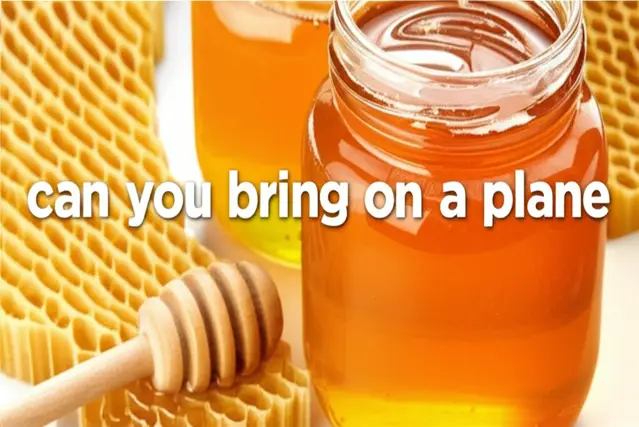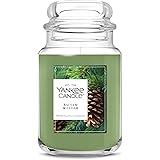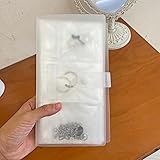So, you’re packing your bags for a trip and a jar of golden, delicious honey catches your eye. Maybe it’s a special local honey you picked up on vacation, or perhaps you just can’t start your day without a spoonful in your tea. But a burning question arises: Can you actually bring honey on a plane? The answer, as with many travel-related queries, isn’t always a straightforward “yes” or “no.”
Navigating the Transportation Security Administration’s (TSA) guidelines can feel like deciphering a secret code, especially when it comes to food items like honey. Regulations evolve, interpretations vary, and the stakes are high – no one wants to have their precious honey confiscated at the security checkpoint. This comprehensive guide will break down the TSA’s rules regarding honey in both carry-on and checked baggage, providing you with the most up-to-date information as of 2025. We’ll also explore exemptions, international travel considerations, and tips for ensuring a smooth and sweet journey.
Let’s dive in and get the sticky situation sorted out!
Understanding the TSA’s Liquid Rule and Honey
The TSA’s primary concern is passenger safety, and their regulations regarding liquids are a key part of that. The infamous “3-1-1 rule” has become a staple of air travel, but how does it apply to honey, a viscous, sticky substance that technically qualifies as a liquid?
The 3-1-1 Rule: A Quick Refresher
The 3-1-1 rule dictates that when it comes to liquids, gels, aerosols, creams, and pastes in your carry-on baggage, the following applies:
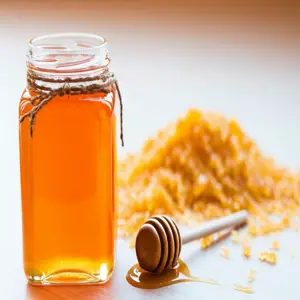
TSA honey rules
- 3.4-ounce (100 milliliters) bottle or less per item.
- 1 quart-sized, clear plastic, zip-top bag containing all your liquids.
- 1 bag per passenger.
This rule is in place to limit the quantity of potentially dangerous substances that can be brought onto an aircraft. But does honey fall under this category? And how strictly is it enforced?
Honey: Liquid, Solid, or Something In-Between?
The TSA officially considers honey a liquid. This means that, in your carry-on baggage, honey must adhere to the 3-1-1 rule. Individual containers cannot exceed 3.4 ounces (100 milliliters), and they must fit comfortably in a single, quart-sized, zip-top bag. If you’re carrying multiple small containers of honey, they all need to fit within that one bag.
However, there’s a crucial caveat: While the 3-1-1 rule is generally enforced, TSA officers have the final say at the security checkpoint. They can, at their discretion, ask you to remove an item from your bag for further inspection or deem it inadmissible if they have concerns.
Real-world example: Sarah was traveling with three small jars of artisanal honey, each containing 3 ounces. She carefully placed them in a quart-sized bag. At security, the TSA officer noticed the jars and asked her to take them out. After a quick visual inspection, he allowed her to proceed, but warned that the decision was at his discretion and another officer might have required her to check them.
Why the 3-1-1 Rule Exists
Understanding the rationale behind the rule can help you appreciate its importance and prepare accordingly. The 3-1-1 rule was implemented following foiled terrorist plots involving liquid explosives. While it might seem inconvenient, it’s a vital security measure designed to protect passengers and crew.
Bringing Honey in Your Carry-On Luggage: Dos and Don’ts
Now that we’ve established that honey is generally considered a liquid under the 3-1-1 rule, let’s delve into the specifics of bringing it in your carry-on luggage.
The 3.4-Ounce Limit: Sticking to the Rule
The most important thing to remember is the 3.4-ounce (100 ml) limit. Any container of honey exceeding this size is likely to be confiscated. It’s best to transfer larger quantities of honey into smaller, TSA-compliant containers before you travel. You can find travel-sized bottles specifically designed for this purpose at most drugstores or online retailers.
Proper Packaging: Minimizing Mess and Maximizing Space
Proper packaging is crucial for preventing leaks and spills in your carry-on. Here are some tips:
- Use leak-proof containers: Opt for containers with tight-fitting lids that won’t easily come undone.
- Double-bag your honey: Place your honey-filled container inside a zip-top bag, and then place that bag inside another zip-top bag. This provides an extra layer of protection against leaks.
- Leave some headspace: Don’t fill the container to the brim. Leave a small amount of space to allow for expansion due to changes in air pressure during the flight.
- Label your containers: While not strictly required, labeling your containers as “Honey” can help TSA officers quickly identify the contents.
TSA PreCheck and Honey: Does it Make a Difference?
TSA PreCheck allows eligible travelers to expedite the security screening process. While it doesn’t exempt you from the 3-1-1 rule for liquids, it can make the overall experience smoother. With TSA PreCheck, you typically don’t need to remove liquids or electronics from your carry-on bag.
However, even with TSA PreCheck, TSA officers retain the right to inspect your bag and may still ask you to remove your honey for further examination. It’s always best to be prepared and follow the 3-1-1 rule, regardless of your TSA PreCheck status.
What if the Honey is Solidified or Crystallized?
Even if your honey has crystallized or solidified, the TSA still considers it a liquid. The consistency doesn’t change the rule. You’ll still need to adhere to the 3-1-1 rule if you’re carrying it in your carry-on luggage.
Potential Issues at the Security Checkpoint
Even if you follow all the rules, you might still encounter issues at the security checkpoint. Here are some common scenarios:
- TSA Officer Discretion: As mentioned earlier, TSA officers have the final say. They may decide that your honey needs further inspection or that it’s not allowed, even if it technically complies with the 3-1-1 rule.
- Concerns about the Substance: If the TSA officer is unsure about the contents of your container, they might ask you to open it for inspection. Be prepared to comply with their request.
- Congestion at the Checkpoint: During peak travel times, security lines can be long and stressful. TSA officers might be more inclined to err on the side of caution, leading to stricter enforcement of the rules.
Tips for a Smooth Security Experience
Here are some tips to help you navigate the security checkpoint with honey in your carry-on:
- Arrive early: Give yourself plenty of time to get through security, especially during busy travel periods.
- Be prepared: Have your liquids bag readily accessible.
- Be polite and cooperative: Treat TSA officers with respect and follow their instructions.
- Consider checking your honey: If you’re concerned about potential issues, the safest option is to pack your honey in your checked baggage.
Packing Honey in Checked Baggage: A More Relaxed Approach
Fortunately, bringing honey in your checked baggage is generally much simpler than carrying it on. The TSA’s restrictions on liquids are far less stringent for checked baggage, giving you more flexibility in terms of quantity and container size.
No Size Restrictions (Generally)
Unlike carry-on luggage, there are typically no specific size restrictions for liquids, including honey, in checked baggage. This means you can pack larger jars or containers of honey without worrying about the 3.4-ounce limit.
The Importance of Secure Packaging
While size restrictions are less of a concern, secure packaging is even more critical for checked baggage. Your luggage will be subjected to considerable handling during transit, and leaks or spills can be a major headache. Here are some tips for packing honey securely in your checked baggage:
- Choose sturdy containers: Opt for containers made of durable materials that can withstand the rigors of air travel. Glass jars should be avoided if possible, as they are more prone to breakage.
- Wrap the containers carefully: Wrap each container of honey individually in bubble wrap or other protective material.
- Place containers in zip-top bags: Even with careful wrapping, leaks can still occur. Placing the wrapped containers inside zip-top bags provides an extra layer of protection.
- Cushion the containers: Pack the containers of honey in the center of your suitcase, surrounded by soft items like clothing or towels. This will help cushion them from impact.
- Consider a hard-sided suitcase: A hard-sided suitcase can provide additional protection for your belongings, especially fragile items like jars of honey.
Preventing Leaks at High Altitudes
Changes in air pressure during flight can cause liquids to expand and potentially leak. To minimize the risk of leaks, follow these steps:
- Leave some headspace: As with carry-on luggage, don’t fill your honey containers to the brim. Leave a small amount of space for expansion.
- Seal the lids tightly: Ensure that the lids of your containers are securely fastened.
- Consider using airtight containers: Airtight containers can help prevent pressure-related leaks.
Declaring Honey in Checked Baggage (If Necessary)
In most cases, you don’t need to declare honey in your checked baggage for domestic flights within the United States. However, if you’re traveling internationally, you should check the customs regulations of your destination country to see if there are any restrictions or declaration requirements for honey.
Real-world example: Mark was traveling to Italy with a large jar of wildflower honey as a gift for his relatives. He carefully wrapped the jar in bubble wrap, placed it in a zip-top bag, and packed it in the center of his suitcase, surrounded by clothing. Upon arrival in Italy, he declared the honey at customs and was allowed to bring it in without any issues.
Risks of Packing Honey in Checked Baggage
While packing honey in checked baggage is generally less restrictive, there are still some risks to be aware of:
- Damage to Your Luggage: Leaks or spills can damage your clothing and other belongings.
- Loss or Delay of Your Luggage: Although rare, luggage can be lost or delayed. If your luggage containing honey is lost, you’ll lose your honey as well.
- Inspection by TSA: The TSA has the right to inspect checked baggage. If they find something suspicious, they may open your suitcase.
Minimizing the Risks
You can minimize the risks of packing honey in checked baggage by following the packaging tips outlined above. Additionally, consider taking out travel insurance that covers lost or damaged luggage.
Honey and International Travel: Navigating Customs Regulations
Traveling internationally with honey adds another layer of complexity. Customs regulations vary from country to country, and it’s essential to research the rules of your destination to avoid potential problems.
Researching Destination Country Regulations
Before you pack your honey for an international trip, take the time to research the customs regulations of your destination country. You can typically find this information on the country’s official government website or the website of its embassy or consulate in your home country.
Look for information on the following:
- Restrictions on honey imports: Some countries may have restrictions on the types or quantities of honey that can be brought into the country.
- Declaration requirements: Many countries require you to declare food items, including honey, upon arrival.
- Permits or licenses: In some cases, you may need to obtain a permit or license to import honey.
- Health certificates: Some countries may require a health certificate for honey, verifying that it meets certain safety standards.
Tip: It’s always better to be safe than sorry. If you’re unsure about the regulations, contact the embassy or consulate of your destination country for clarification.
Customs Declarations: Being Honest and Accurate
When you arrive at your destination country, you’ll typically be required to fill out a customs declaration form. Be sure to declare any honey you’re carrying, even if you’re unsure whether it’s required. Providing false or misleading information on a customs declaration form can result in fines or even legal penalties.
Be prepared to answer questions about the honey, such as its origin, quantity, and intended use. If you have any supporting documentation, such as a health certificate, have it readily available.
Potential Issues at Customs
Even if you’ve done your research and declared your honey, you might still encounter issues at customs. Customs officers have the authority to inspect your luggage and confiscate any items that violate the country’s regulations.
Common issues include:
- Honey exceeding the allowable quantity: If you’re carrying more honey than the country’s regulations permit, the excess may be confiscated.
- Honey not meeting health standards: If the honey doesn’t meet the country’s health standards, it may be rejected.
- Lack of proper documentation: If you’re required to have a permit or health certificate and you don’t have it, your honey may be confiscated.
Dealing with Customs Officers
If you encounter any issues at customs, remain calm and polite. Explain your situation clearly and provide any supporting documentation you have. If the customs officer decides to confiscate your honey, accept their decision gracefully. Arguing or becoming confrontational will only make the situation worse.
Real-world example: Emily was traveling to Australia with a jar of honey from her family’s apiary. She had researched the Australian customs regulations and knew that honey imports were subject to certain restrictions. She declared the honey on her customs form and had a health certificate from her local agricultural department. When she arrived in Australia, the customs officer asked her about the honey and examined her documentation. After a brief inspection, he allowed her to bring the honey into the country.
Specific Country Examples: Honey Regulations
Here’s a brief overview of honey regulations in some popular international destinations:
| Country | Honey Regulations |
|---|---|
| United States | Generally unrestricted for domestic travel. International travel requires declaration and may be subject to restrictions depending on the origin of the honey. |
| Canada | Honey must be declared. Commercial quantities may require import permits. |
| European Union | Honey imports are generally permitted, but must meet EU standards for quality and safety. Declaration is required. |
| Australia | Strict biosecurity regulations. Honey imports are subject to inspection and may require permits and health certificates. |
| Japan | Honey imports are generally permitted, but must be declared. Commercial quantities may require import permits. |
Disclaimer: These are just general guidelines. Always check the official customs regulations of your destination country for the most up-to-date information.
Exemptions to the TSA’s Liquid Rule
While the 3-1-1 rule is generally enforced, there are some exemptions that may apply to honey in certain situations.
Medically Necessary Liquids
The TSA allows passengers to carry medically necessary liquids, gels, and aerosols in quantities exceeding 3.4 ounces in their carry-on baggage. However, you must declare these items to a TSA officer at the security checkpoint.
If you’re carrying honey for medical reasons, such as treating a cough or sore throat, you may be able to bring it in your carry-on baggage even if it exceeds the 3.4-ounce limit. However, you’ll need to provide documentation, such as a doctor’s note or prescription, to support your claim.
Important: The TSA’s website states: “Medically necessary liquids are exempt from the 3-1-1 rule. However, you must declare them to a TSA officer at the checkpoint for inspection.”
Infant Formula and Breast Milk
The TSA also allows passengers to carry breast milk and formula for infants in quantities exceeding 3.4 ounces in their carry-on baggage. This exemption also extends to juice or other liquids for infants.
While honey is generally not recommended for infants under one year old due to the risk of botulism, this exemption might be relevant if you’re traveling with an older child who needs honey for medical reasons and you have appropriate documentation.
Purchases Made in the Secure Area of the Airport
Liquids purchased in the secure area of the airport (i.e., after you’ve passed through security) are exempt from the 3-1-1 rule. This means you can buy a large bottle of water, juice, or even honey at an airport store and bring it on the plane.
These purchases are typically placed in a tamper-evident bag by the store, and you should not open the bag until you reach your final destination. If you have a connecting flight, you may need to show the bag to a TSA officer at the connecting airport.
Important: This exemption only applies to purchases made in the secure area of the airport. You cannot bring liquids purchased outside the airport through security if they exceed the 3.4-ounce limit.
How to Declare Exempt Liquids
If you’re carrying liquids that are exempt from the 3-1-1 rule, you’ll need to declare them to a TSA officer at the security checkpoint. Here’s how to do it:
- Inform the TSA officer: As you approach the security checkpoint, tell the TSA officer that you have medically necessary liquids or other exempt items in your carry-on baggage.
- Provide documentation: If you have a doctor’s note or prescription, have it readily available.
- Be prepared for inspection: The TSA officer may ask you to remove the liquids from your bag for further inspection. They may also test the liquids to ensure that they are not dangerous.
Alternative Sweeteners: A Possible Solution?
If you’re concerned about the hassle of traveling with honey, you might consider using alternative sweeteners instead. There are many options available that are easy to pack and don’t fall under the TSA’s liquid rule.
Granulated Sugar
Granulated sugar is a readily available and TSA-friendly sweetener. You can pack it in small, resealable bags or containers and add it to your coffee, tea, or other beverages on the plane.
Artificial Sweeteners
Artificial sweeteners like aspartame, saccharin, and sucralose are available in individual packets or small containers. They’re lightweight, easy to pack, and don’t count as liquids under the TSA’s rules.
Stevia
Stevia is a natural sweetener derived from the stevia plant. It’s available in granulated or powdered form and can be packed like sugar. Some stevia products are also sold in liquid form, so be mindful of the 3-1-1 rule if you choose a liquid stevia option.
Honey Powder
Honey powder is dehydrated honey that has been ground into a fine powder. It retains the flavor of honey but doesn’t have the sticky consistency. Honey powder is TSA-friendly and can be used as a substitute for honey in many recipes.
Agave Nectar Powder
Similar to honey powder, agave nectar powder is a dehydrated form of agave nectar. It provides a similar sweetness profile to honey and is easily portable.
Considerations When Choosing Alternative Sweeteners
When choosing an alternative sweetener, consider the following factors:
- Taste: Different sweeteners have different flavor profiles. Choose one that you enjoy.
- Sweetness: Some sweeteners are more concentrated than others. Adjust the amount you use accordingly.
- Dietary restrictions: If you have any dietary restrictions, such as diabetes, choose a sweetener that is appropriate for your needs.
- Portability: Choose a sweetener that is easy to pack and travel with.
Current Trends and Statistics in Air Travel and Food Regulations
Understanding the broader context of air travel trends and food regulations can provide valuable insights into the challenges and changes affecting what you can bring on a plane.
Increasing Passenger Volume
Air travel is constantly growing. According to the International Air Transport Association (IATA), passenger numbers are expected to continue to rise in the coming years. This increasing passenger volume puts pressure on airport security and can lead to stricter enforcement of regulations.
Evolving Security Threats
Security threats are constantly evolving, and the TSA must adapt its procedures to address new risks. This can lead to changes in regulations regarding liquids and other potentially dangerous items.
Growing Demand for Specialty Foods
More and more travelers are interested in bringing specialty foods, like artisanal honey, on their trips. This trend is driven by factors such as increasing awareness of food quality, a desire to support local producers, and the popularity of food tourism.
Stricter Food Safety Regulations
Food safety regulations are becoming stricter in many countries, both domestically and internationally. This is due to increasing concerns about foodborne illnesses and the globalization of the food supply. These regulations can impact the types of food items that can be brought across borders.
Impact of Technology on Security Screening
Advanced imaging technology is being increasingly used at airport security checkpoints. These technologies can help TSA officers detect hidden threats and identify prohibited items, potentially leading to more thorough inspections of carry-on baggage.
The Rise of Sustainable Travel
Sustainable travel is gaining popularity, with travelers increasingly seeking ways to reduce their environmental impact. This trend can influence decisions about what to pack, as travelers may opt for reusable containers and eco-friendly products.
Data and Statistics
While precise statistics on honey confiscations are not publicly available, general TSA data offers insights:
TSA confiscates thousands of prohibited items daily: Liquids exceeding 3.4 ounces consistently rank among the most confiscated items.
Increased scrutiny on food items: Post-pandemic, there’s been heightened awareness and, anecdotally, increased scrutiny of food items due to potential cross-contamination concerns.
International travel complexities: Data shows a higher rate of customs issues related to food items in international travel compared to domestic.
Common Mistakes to Avoid When Traveling with Honey
Even with careful planning, it’s easy to make mistakes when traveling with honey. Here are some common pitfalls to avoid:
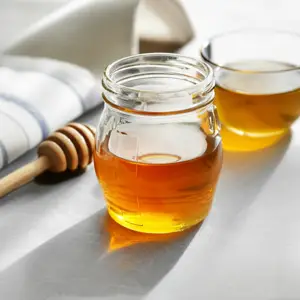
honey travel restrictions
Overpacking Liquids in Your Carry-On
Don’t try to cram too many liquids into your quart-sized bag. If you can’t comfortably close the bag, you’ll likely be asked to remove some items.
Using Inadequate Packaging
Don’t skimp on packaging. Use sturdy containers, wrap them carefully, and double-bag them to prevent leaks.
Failing to Declare Items at Customs
Always declare food items, including honey, when traveling internationally. It’s better to be honest and face potential restrictions than to risk fines or legal penalties.
Arguing with TSA or Customs Officers
Don’t argue with TSA or customs officers. Remain calm, polite, and cooperative. If they make a decision you don’t agree with, accept it gracefully.
Assuming Regulations are Universal
Don’t assume that the same regulations apply in every country. Always research the specific rules of your destination.
Forgetting to Leave Headspace in Containers
Remember to leave some headspace in your containers to allow for expansion due to changes in air pressure.
DIY Honey Travel Packs
For smaller quantities of honey, consider making your own travel-sized packs. This allows for portion control and minimizes the risk of spills from larger containers.
Using Small Squeeze Bottles
Purchase small, travel-sized squeeze bottles (available at most drugstores) and fill them with honey. These are easy to use and convenient for adding honey to your tea or coffee on the go.
Creating Honey Sticks
You can create your own honey sticks by sealing small amounts of honey in individual straws. This is a fun and mess-free way to carry honey with you.
* **Materials:** Honey, clear straws, heat sealer (or iron with parchment paper).
* **Instructions:** Fill the straw with honey, leaving a small space at each end. Seal both ends with a heat sealer or an iron covered with parchment paper.
Individual Honey Packets
Use small, resealable plastic bags to create individual honey packets. These are lightweight and easy to pack.
* **Caution:** Ensure the bags are properly sealed to prevent leaks.
Honey Alternatives for Travelers with Allergies
If you’re allergic to honey or traveling with someone who is, it’s important to find suitable alternatives. Here are some options:
Maple Syrup
Maple syrup is a natural sweetener with a distinct flavor. It’s a good substitute for honey in many recipes and can be used to sweeten beverages.
Agave Nectar
Agave nectar is another natural sweetener that is derived from the agave plant. It has a mild flavor and is often used as a substitute for honey or sugar.
Brown Rice Syrup
Brown rice syrup is a thick, amber-colored sweetener made from brown rice. It has a mild, nutty flavor and is a good option for those who are allergic to honey or other sweeteners.
Molasses
Molasses is a dark, viscous syrup that is a byproduct of sugar production. It has a rich, complex flavor and can be used as a sweetener in baked goods and other recipes.
Coconut Nectar
Coconut nectar is a natural sweetener made from the sap of the coconut palm. It has a mild, caramel-like flavor and is a good alternative to honey.
What if your honey is confiscated?
Even if you take all the necessary precautions, there’s still a chance your honey could be confiscated at security or customs. Here’s what to do:
- Stay Calm: Arguing or getting upset will not change the outcome. Remain polite and respectful.
- Ask for Clarification: If you’re unsure why the item is being confiscated, politely ask the officer for an explanation. Understanding the reason can help you avoid the same issue in the future.
- Consider Alternatives: If possible, ask if there’s an option to ship the honey to your destination instead of having it confiscated. This might not always be feasible, but it’s worth asking.
- Accept the Decision: Ultimately, the decision of whether or not to confiscate an item rests with the security or customs officer. Accept their decision gracefully and move on.
- Document the Incident: If you believe the confiscation was unjustified, make a note of the date, time, location, and the officer’s name (if possible). You can then file a complaint with the TSA or customs agency.
It is important to note that while you can file a complaint, there’s no guarantee of reimbursement for confiscated items. Prevention is always the best approach, so ensure you’re fully aware of the regulations before you travel.
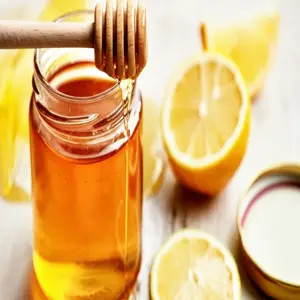
flying with honey
The Future of Food Regulations in Air Travel
As air travel continues to evolve, so too will the regulations governing what passengers can bring on board. Here are some potential future trends to watch:
- Increased Use of Technology: Expect to see greater reliance on advanced screening technologies, such as AI-powered scanners, to detect prohibited items, including liquids.
- Personalized Security Screening: In the future, security screening may become more personalized, with algorithms assessing individual risk profiles to determine the level of scrutiny required.
- Standardized International Regulations: There may be a push for greater harmonization of food regulations across different countries, making it easier for travelers to navigate customs requirements.
- Focus on Sustainability: Expect to see more emphasis on sustainable travel practices, with airlines and airports encouraging passengers to bring their own reusable containers and avoid single-use plastics.
- Digital Documentation: Digital health certificates and customs declarations may become more widespread, streamlining the process of clearing security and customs.
FAQ: Your Burning Questions Answered
Let’s address some of the most frequently asked questions about bringing honey on a plane:
Can I bring a large jar of honey in my checked baggage?
Yes, you can generally bring a large jar of honey in your checked baggage. There are typically no size restrictions for liquids in checked baggage, but make sure to package it securely to prevent leaks.
Can I bring honey in my carry-on if it’s less than 3.4 ounces?
Yes, you can bring honey in your carry-on baggage as long as it’s in a container that is 3.4 ounces (100 milliliters) or less and fits comfortably in a quart-sized, zip-top bag.
Will TSA confiscate my honey even if it meets the 3-1-1 rule?
While it’s unlikely if you follow the rules, TSA officers have the final say. They may ask you to remove your honey for further inspection or deem it inadmissible if they have concerns.
Does TSA PreCheck exempt me from the liquid rule for honey?
No, TSA PreCheck does not exempt you from the 3-1-1 rule for liquids. You still need to comply with the 3.4-ounce limit for honey in your carry-on baggage.
Do I need to declare honey when traveling internationally?
Yes, you should declare honey when traveling internationally. Customs regulations vary from country to country, so it’s essential to research the rules of your destination.
What happens if I don’t declare honey at customs?
Failure to declare honey at customs can result in fines or legal penalties. It’s always better to be honest and declare any food items you’re carrying.
Can I bring honey sticks on a plane?
Yes, honey sticks are generally allowed in both carry-on and checked baggage. They are small, individually packaged, and less likely to cause issues.
Is honey considered a liquid by TSA even if it’s crystallized?
Yes, even if your honey has crystallized or solidified, the TSA still considers it a liquid and the 3-1-1 rule applies to carry-on luggage.
Can I bring honey for medical reasons in my carry-on?
Yes, you may be able to bring honey for medical reasons in your carry-on, even if it exceeds the 3.4-ounce limit, but you’ll need to declare it to a TSA officer and provide documentation, such as a doctor’s note.
Where can I find the most up-to-date information on TSA regulations?
The most up-to-date information on TSA regulations can be found on the TSA’s official website: https://www.tsa.gov/. Always check the website before you travel to ensure you’re following the latest rules.
Can I ship honey to my destination instead?
Yes, shipping honey to your destination is an excellent alternative to carrying it on a plane. Use a reputable shipping service and package the honey very carefully to prevent leaks or damage during transit. This is especially helpful for large quantities or fragile containers.
Final Thoughts
Bringing honey on a plane in 2025, whether domestically or internationally, requires careful planning and adherence to TSA and customs regulations. While the 3-1-1 rule can be restrictive for carry-on luggage, packing honey securely in your checked baggage offers a more relaxed approach. Always research the specific regulations of your destination country when traveling internationally, and don’t hesitate to contact the embassy or consulate for clarification. Remember that TSA officers have the final say at the security checkpoint, so be prepared to comply with their instructions.
The key to a successful journey with honey is preparation. By understanding the rules, packing strategically, and being proactive in your research, you can minimize the risk of encountering problems at the airport. If you’re still unsure, consider
Yankee Candle Balsam & Cedar, Holiday Scented Candle, 22oz Large Jar with up to 150 Hour Burn Time, Giftable
$14.99 (as of November 26, 2025 06:37 GMT +00:00 - More infoProduct prices and availability are accurate as of the date/time indicated and are subject to change. Any price and availability information displayed on [relevant Amazon Site(s), as applicable] at the time of purchase will apply to the purchase of this product.)PVC Transparent Jewelry Storage Book –Home Shop Dustproof Earring, Ring, and Necklace Large Capacity Organizers 84-slot+50Bag
Now retrieving the price.
(as of November 25, 2025 11:03 GMT +00:00 - More infoProduct prices and availability are accurate as of the date/time indicated and are subject to change. Any price and availability information displayed on [relevant Amazon Site(s), as applicable] at the time of purchase will apply to the purchase of this product.)
